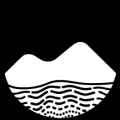Templates
ECL offers a wide range of templates for submitting data. Submissions that utilize templates ensure completeness and reproducibility of data and enables an efficient curation process.
Overview of Templates
| File Sheet | Description | Mandatory Field(s) |
|---|---|---|
Method Metadata | Information about detection limit, total procedural blank, normalization, fractionation (if applicable). Additional fields can be added. | |
Sample Metadata | Information to identify, locate, and describe the samples, including IGSNs. Extra fields can be added. Register samples with SESAR2. | Sample name, Latitude, Longitude, Elevation (or Location keywords), Lithology |
Data Source | Information to identify the dataset: title, author(s), creator (form-filler) | Title, Author(s), Abstract, Contact Info |
Data | The measured geochemical data values, along with basic information about how that value was derived (what was the material analyzed and what was done to it before the measurement?) | Sample name, Analyzed Material, Parameter(s), Method Code(s) |
Primary Analytical Metadata | Information about the analytical procedure and accuracy and reproducibility, including technique, laboratory, and reference sample information. | Method Code, Parameter, Technique, Instrument, Laboratory |
Getting Started with ECL Templates
The EarthChem Library offers multiple templates, the different workbooks have different fields customized to the material analyzed and the method used.
There are several tabs in this workbook to help catalog necessary metadata for our geochemical databases.
1. Mandatory fields are labeled in boldface. The mandatory fields are the minimum requirements for the data to be entered into our searchable databases. The Requirements for the Publication of Geochemical Data document describes why certain data are necessary.
2. Longitude/Latitude should be reported in decimal degrees ideally to at least four decimal places (if the precision is that good),
and negative values for South and West.
3. We strongly recommend using the EarthChem Vocabularies to complete your parameters, technique and unit names, as well as mineral abbreviations.
4. To manipulate data in Excel, the ‘Transpose’ option is useful to transpose rows to columns or vice versa. Use “Paste Special” then check the box for Transpose.
5. More info about IGSNs (International Geo Sample Number) can be obtained at www.geosamples.org/aboutigsn.
6. The Method Code is a numerical value assigned by you that links the column of measured values (Data Tab) with the Method information (Primary Analytical Metadata tab).
Submission Templates
| Template Type | Description of Use | Template |
|---|---|---|
Analytical Method | Register instrument calibration data. Currently method templates are available for EPMA/SEM-EDS and LA-ICP-MS. Submit this template for publication with DOI (EarthChem Library is preferred, but you can submit the method template to other repositories as well, e.g. protocols.io, Zenodo, etc.). The DOI should be cited whenever you are publishing data associated with this technique. | |
Geochemistry Data | Use for various data types such as bulk analyses (majors, traces, isotopes), mineral analysis (in-situ analysis), and melt inclusion analysis. | |
Specialized Communities | For specialized submissions please check EarthChem Communities for templates and specific submission guidelines. | |
Geochronology | Geochronology data such as (U-Th)/He, U-Pb, Ar-Ar, cosmogenic nuclides, and U-series data can be added to the Geochron System for better discoverability and direct interfacing with your instrument. To receive data curation services, a permanent archive for your dataset, and to be issued a DOI, please submit your Geochron files to the EarthChem Library. |


